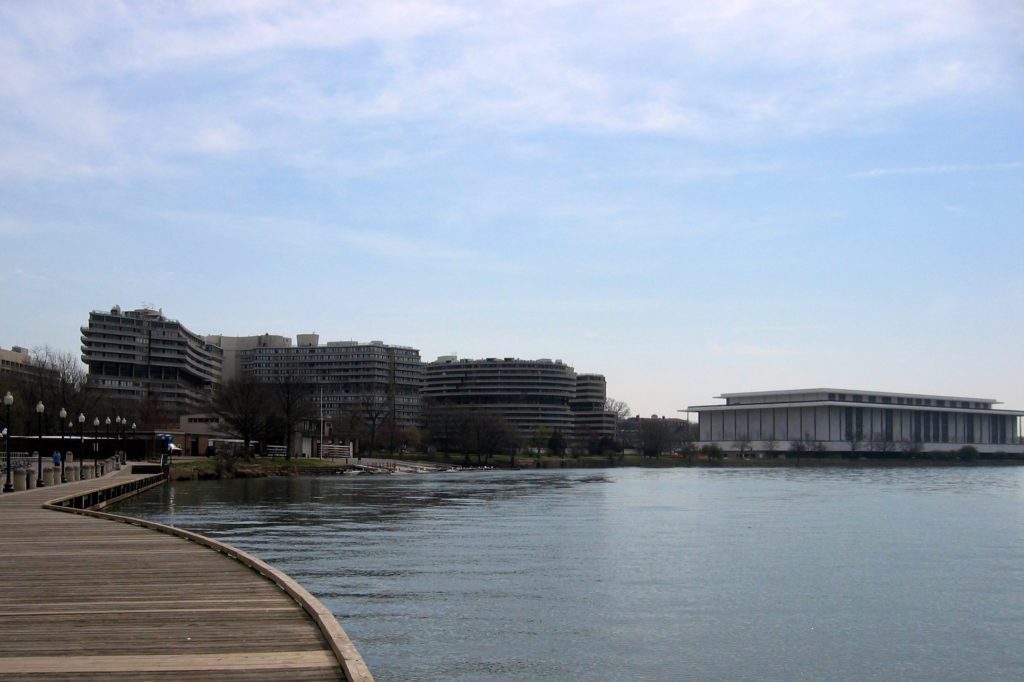Park Service Says Yes to New Boathouses on Georgetown Waterfront
By • February 21, 2017 0 2821

It’s official: The National Park Service has approved “a plan for the Georgetown Nonmotorized Boathouse Zone Development Plan and Environmental Assessment.”
As anticipated, Bob Vogel, national capital regional director for the NPS, signed off Feb. 13 to a “Finding of No Significant Impact for the development of the nonmotorized boating facilities and related park improvement along the District of Columbia side of the Potomac River in the Georgetown area.” Translation: the NPS has approved the concept.
It also means boathouses will eventually be built on the shore of the Potomac at 34th and Water (K) Streets NW, between Key Bridge and Georgetown Waterfront Park — and more upstream. In discussion for decades, the new waterfront spaces will take years to become a reality. Decisions are still to be made if something new will replace Key Bridge Boathouse and if a boating area will go between the Aqueduct Bridge ruins and the partly shuttered Washington Canoe Club, which continues its activities next to the building. Also along the shoreline is the Potomac Boat Club.
The Georgetowner reported two years ago: “In the next few years, if the dreams of Georgetown and George Washington universities come true, the Georgetown riverfront will look very different. At a National Park Service public ‘scoping’ meeting held on Feb. 5 at the D.C. Palisades Public Library, the agency unveiled plans they intend to make a reality for the hotly contested Georgetown waterfront – from 34th Street to a parcel of land just upstream of the Washington Canoe Club.
“The 1,500 feet of riverfront is now considered some of the most valuable land in the city, and it is owned and controlled by the NPS.
“The NPS push toward new rowing facilities is based on the belief that the Thompson Boat Center has long been inadequate for the growing needs of rowers. The project to change the area into a center for elite collegiate and scholastic rowers, as well as a place for recreational paddlers to launch from, has been bounced around since the 1970s.”
Here are more details from the NPS’s statement on the recent decision:
Public involvement and work with other federal and District government agencies played an important role in developing the alternative proposals and environmental assessment for this project. The FONSI is based on a preferred alternative that includes proposes changes that respect the historic character, natural resources and existing recreational uses of Chesapeake & Ohio Canal National Historical Park and Rock Creek Park while providing substantial improvements to the waterfront.
The preferred alternative allows for the phased development of nonmotorized boating facilities for both rowing programs and recreational paddlers, while providing planning flexibility in future size, placement, and design of these facilities. The preferred alternative includes two new facilities east of the aqueduct along Water Street NW in the District, an expanded kayak rental facility, and a proposed reconfiguration of the streetscape to improve the connections of the Capital Crescent Trail and Georgetown Waterfront Park, and access to the private properties in the zone.
The FONSI completes the initial project planning and compliance with the National Environmental Policy Act and National Historic Preservation Act. The NPS will work with a variety of partners to implement the plan. The initial coordination will begin soon, but an exact timetable for realizing the plan has not yet been determined.
The FONSI, EA, Errata and associated documents are available for viewing online via the NPS Planning, Environment and Public Comment [website.](http://parkplanning.nps.gov/nmbzea_FONSI)

